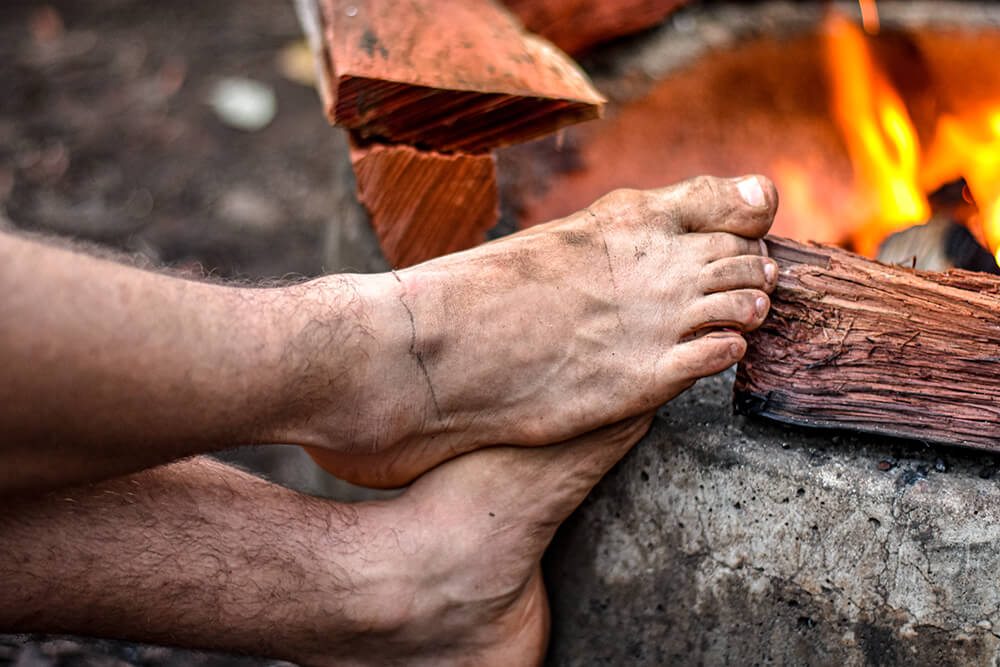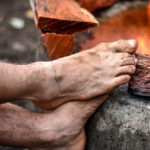Blisters can be incredibly unpleasant, mainly if they spring up on your feet and make trekking challenging. What’s the best way to manage them? While one solution could be duct tape, this may only work for some. Moleskin is an alternate choice, but it may only be appropriate in some cases. In this article, we’ll look at how to handle blisters and whether duct tape works better than Moleskin.

Moleskin for Blister Prevention
The thick, velvety cotton flannel that makes up the moleskin material has been treated with glue. It is simple to cut the Moleskin into whatever shape you need because it has the same feel as felt or chamois. Since Moleskin is less sticky than duct tape, there is less chance of damaging an already-existing blister when it is removed. The excellent cushioning of Moleskin makes it ideal for blisters that have already formed. The superior breathability of Moleskin is another benefit because it reduces moisture buildup and blister aggravation.
Any area of the body where a blister may form can be covered with moleskin. Since the feet are frequently subjected to harsh temperatures and environmental factors, it is beneficial for curing blisters on the feet. Blisters on the hands, arms, elbows, and knees are all easily treated with moleskin.
As a result, Moleskin has developed into a crucial product in various industries, including sports medicine, police enforcement, the military, firefighters, construction workers, farmers, manufacturers, and others.
It’s important to remember while using Moleskin that if your socks get wet, they might not adhere to them as well. This is because moist socks do not adhere to Moleskin as effectively as dry ones. The sock has a greater propensity to roll up or roam around as your feet move inside of it. This can be uncomfortable and irritating.
Leaving enough space for your toes is the most straightforward approach to avoid these issues. Your toes will have enough room to move about without discomfort if you wear socks with lots of space between them. If you’re donning a pair with a tiny gap between them, then.
Duct Tape for Blister Prevention
Duct tape comes in handy for various outdoor and recreational activities and is widely available at a low cost; thus, many hikers choose to use it. It can be applied and removed without leaving behind any residue. However, this type of tape might not be the best option for specific circumstances; for instance, if you are hiking across rough terrain, duct tape may need more strength to protect against sharp objects. It can cause blisters if placed directly on the skin. To avoid these problems, using duct tape coupled with moleskins is recommended.
Moleskin provides a selection of textures and designs that surpass duct tape. It is not as fragile as duct tape, offering better protection from sharp items. Combining Moleskin and duct tape makes a powerful protective barrier for the feet by placing the Moleskin before the duct tape. Making use of something stickier than regular Moleskin will supply extra cushioning on such occasions.
For a better seal, apply a single sheet of duct tape over the area and flatten any creases. That way, no air will slip through.
When your socks are damp, and Moleskin won’t stick, duct tape can be a brilliant choice to prevent the hot area from growing. It’s more waterproof than Moleskin, making it perfect for wet conditions like those you may face when trekking. Ultimately, it depends on what you’re trying to do.
If you’re looking for a swift remedy to avoid blisters, duct tape could be the solution. It is not recommended to use duct tape when backpacking over lengthy distances. However, it should be OK for short journeys.
When to Use Moleskin vs. Duct Tape?
Both moleskin and duct tape are effective at preventing blisters from forming. However, depending on the circumstance, each has advantages and disadvantages. Here are some suggestions for deciding whether moleskin or duct tape would be better for you.
The new blister prevention method is less likely to irritate the skin than duct tape and prevents blisters from forming in dry conditions. Before or immediately after a blister forms, hot regions can be covered in Moleskin to avoid further damage or irritability from friction. Moleskin also acts as a cushion for the skin beneath, preventing chafing and blister formation in regions where there is already some pain from rubbing or moisture accumulation between layers of clothes. Use Moleskin to stop blisters from forming on your skin.
Existing blister protection
Because of its lower propensity to irritate skin than duct tape, Moleskin is better at mending existing blisters. Moleskin has a soft, felt-like sensation and can be cut into any form required, making it more comfortable for the blister while it heals.
When hiking in damp weather, duct tape is preferable to Moleskin since it is waterproof and offers a nearly frictionless surface, even in wet situations. Compared to Moleskin, it is also less prone to roll up or move while worn with damp feet and socks.
When Moleskin isn’t accessible or sticking: Duct tape is an attractive fallback option if you can’t find any moleskin or have run out on the trail. Blisters can be effectively avoided, hot regions cooled, and even existing blisters can be safeguarded. Before applying duct tape, it is crucial to prevent blisters, and the easiest method to do this is to first wrap the damaged region with gauze or a non-stick bandage. After that, duct tape the entire area shut.







